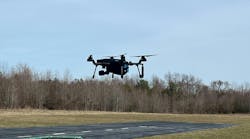You have just spent a large amount of time, effort and money developing your Emergency Operations Plan. Now, how do you know it is going to work when needed? In order to make all of your hard work pay off, you need to validate your plan by testing it. This is referred to as exercising your plan.
Emergency Operation Plans (EOPs), are exercised one or several sections or annexes at a time. A complete EOP is too large to be properly exercised all at once. The purpose of exercising the EOP is to find weaknesses in the plan before it is put to the test in a real incident. Because of this goal, exercises are considered no-fault, meaning that no person or agency will be blamed for any deficiencies uncovered during the exercise phase. In fact, if an exercise does not reveal any weakness or areas that need improvement, it probably was an improperly designed and conducted exercise. Some of the most successful exercises are ones that discover a major flaw in the plan.
All exercises and exercise evaluations should try to be conducted in compliance with the Homeland Security Exercise and Evaluation Program (HSEEP), for designing, conducting and evaluating exercises. HSEEP is the current standard that needs to be followed in order to get proper credit and possible funding from the federal government.
The Federal Office of Domestic Preparedness (ODP), has four manuals that cover what is needed to prepare, conduct and evaluate an exercise in accordance with HSEEP standards. They are:
- States the requirements and guidelines for establishing and maintaining an exercise and evaluation program.
- The methods for evaluating exercises and improving the program.
- Helps establish an exercise program with a standardized design, development and evaluation methods usable with any type of exercise.
- Sample exercise documents and forms.
Exercise Types
There are three different types of exercises; each building upon the previous one. They are: Table Top, Functional and Full-Scale.
A Table Top Exercise is a low-stress exercise where participants follow a written exercise script that spells out the events as they occur. The participants, whether an individual or an agency, respond to the scenario as it unfolds. The time line may be accelerated in order to allow more events to develop and be addressed during the exercise.
Functional Exercises, while also conducted in a structured, controlled environment are more stressful than the Table Top Exercises. In a Functional Exercise, information is supplied to the participants, through injects, as the exercise is conducted. This requires the participants to react to the information provided.
Full-Scale Exercises are conducted out in the field in near-real time. In a Full-Scale Exercise, personnel, vehicles and other resources are mobilized as if it is a real event. As a safety measure, emergency vehicles usually don't respond with emergency lights and sirens activated.
All three types of exercises start out the same way. First, you need to establish an exercise design team and team leader. The members of the design team should be stakeholders from the different departments and agencies that will be testing their annexes. The members of the design team from participating agencies are known as trusted agents. Just as the name implies, they need to be trusted not to go back to their agencies and disclose the contents of the exercise. Next, you need to set a time line for the planning of the exercise as well as a budget. Finally, you have to determine what sections of the plan are being exercised and what the objectives of the exercise are. Once these tasks have been completed you can go forward with the exercise planning. Don't forget to give the exercise a name; this can be a good team building task.
For the purposes of this article, this exercise will be designed around the release of a gas inside of a shopping mall; this can be an accidental or intentional release. The annexes to be tested will be Law Enforcement, Emergency Medical System and Communications. It is understood that many more departments and agencies will be taking part in the exercise, but their performances and annexes will not be the objective of the exercise.
Objectives have to be established as to clearly state what part of the annex is being tested, such as which agency takes command of the incident or if certain functions of the Communication Annex work.
Sticking to the script
Once the objectives of the exercise are agreed upon the design team can start to develop the scenarios that best covers the objectives. In designing the exercise it is better to start small and to add to it if needed. Sometimes all three types of exercises are designed too large and then fail due to their own weight and not because of weakness with the plan.
For the Table Top Exercise the test script is created for the participants to use on the day of the exercise in the classroom. Here the Facilitator/Controller leads them through the scenario with questions being asked of the different organization on how they would handle a problem and what impact their actions would have on other participants in the exercise.
The Functional Exercise takes the exercise to the next level. While participants are still in a controlled environment, participants have to handle situations in almost real time with problems being sent in from controllers or from the Simulated Cell (SIMCELL). These messages could be a simulated phone call, radio message, or in some other format.
With a Full-Scale Exercise, the participants are out in the field, in a real world environment. Here they are given the scenario and injects in a real time environment. Sometimes parts of the exercise may have to be accelerated, but for the most part the exercise is in real time. As stated before, for safety reasons vehicles are not rushed to the exercise with lights and sirens activated to prevent any accidents occurring before the exercise begins. Also all participants; volunteers, actors, etc. must strictly adhere to the exercise script. No one is allowed to "freelance" or change their role in the exercise. This can lead to injuries or worse, not knowing whether an event is part of the exercise or a "real world" situation.
Depending on the exercise scenario, having loaded firearms must be carefully considered. If the use of firearms is written into the exercise, extreme care must be taken to be sure that there are no live loaded firearms in the area of exercise. This is another reason why it is so important that all exercise participants follow the exercise plan and do not improvise.
Next month's article will continue reviewing how to conduct an exercise and then evaluating it.


